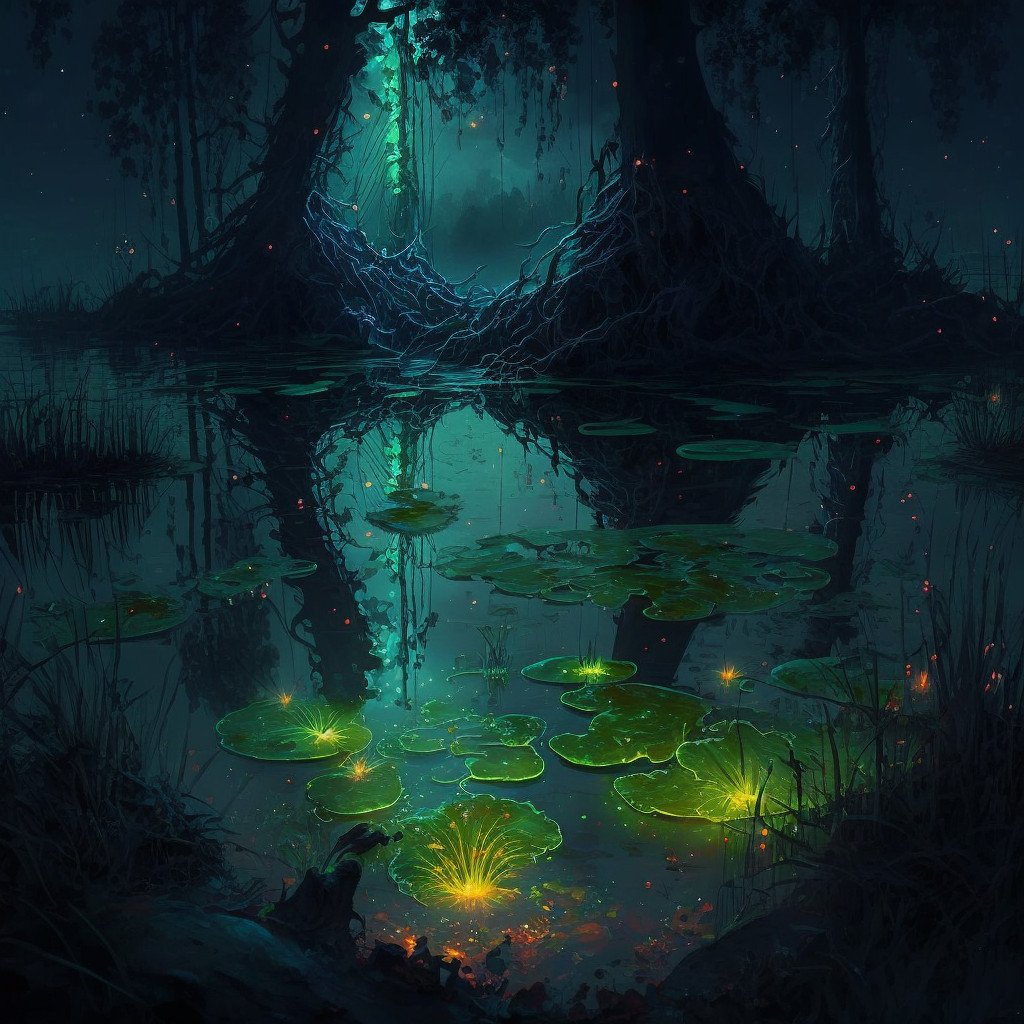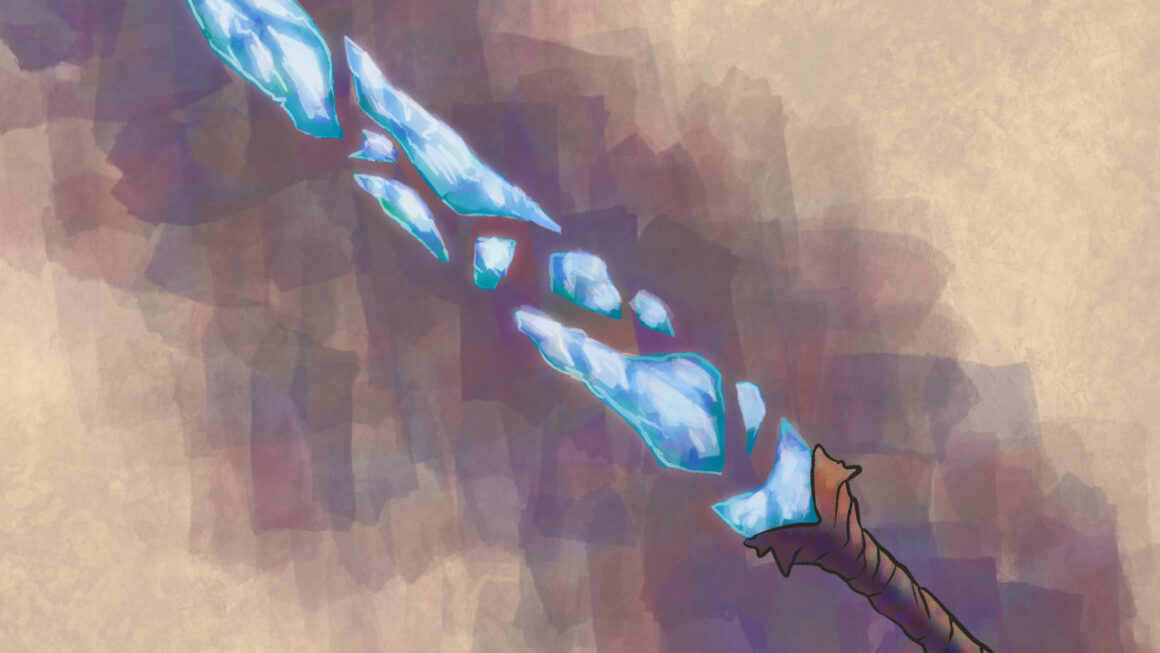
Aquatic Hazards
Aquatic environments host different challenges to a group of adventurers. Exploring seaside caves, partially submerged castles, or an underwater dungeon can present new and dangerous aquatic hazards.
Below are some example hazards that can be found in or around water.
Algae Bloom
An excess of algae can look like a layer of green slick on the surface of water. The algae produces toxins that can be harmful if consumed or swam in, causing severe skin irritation and difficulty breathing.
A patch of algae bloom covers a 5-foot square floating at the surface of a body of water. A creature that comes into contact with the algae bloom takes 5 (1d10) poison damage and must succeed on a DC 12 Constitution saving throw or be poisoned for 1 hour.
Any effect that cures poison, and any effect that deals cold or radiant damage destroys a patch of algae bloom.
Bioluminescent Algae
In still water, the bioluminescent algae is completely invisible, but a slight current or other gentle activity that disturbs the water causes a bright neon blue light to appear as the tiny algae are jostled. Significantly disturbing the water produces a dangerously bright response.
The algae patch is mixed throughout a body of water, covering a 5-foot cube area. Moving faster than half speed or performing similar activity within the area causes a sudden burst of light. Each creature within 20 feet of the algae must succeed on a DC 13 Constitution saving throw or be blinded for 1 minute. A creature can repeat the saving throw at the end of each of its turns, ending the effect on itself on a successful save. Once a patch of algae has produced this effect, it can’t do so again for 1 hour.
An effect that deals cold, radiant, or poison damage destroys a patch of bioluminescent algae.
Electric Jellyfish
While undisturbed, electric jellyfish appear like tiny transparent umbrellas floating beneath the water’s surface. This can make them difficult to detect until a creature enters their pool and is struck by their long stingers, inducing an electric shock.
An electric jellyfish pool covers a 5-foot cube area. A creature has disadvantage on ability checks to detect the presence of the pool. A creature that enters the area for the first time on a turn or starts its turn there must succeed on a DC 15 Constitution saving throw or take 10 (3d6) lightning damage and be paralyzed until their next turn.
A jellyfish pool has AC 12, 20 hit points, and is immune to lightning damage.
Slick Moss
Slick moss grows on stone and rock surfaces that receive regular exposure to water and is usually a shade of green. It can grow along vertical surfaces like a cave wall and the moss secretes an oily substance that becomes slippery when wet.
A slick moss patch covers a 5-foot square area. This area is difficult terrain. A creature that enters the area for the first time on a turn or starts its turn there must succeed on a DC 14 Dexterity saving throw or fall prone and have its speed reduced to 0 until its next turn. A creature has disadvantage on any check to climb a surface covered with slick moss.
An effect that deals cold or fire damage destroys a patch of slick moss.
Spined Urchins
Spined urchins are tiny black sea creatures with long sharp spines. They are usually found underwater amongst sea grass and they can climb vertical surfaces. Their spines can pierce clothing and shoes or find an opening in armor. The spines then detach and can be a source of continuous pain.
A spined urchin colony covers a 5-foot square area. A creature that enters the area takes 5 (2d4) piercing damage and has a spine stuck in them. While the spine remains, a creature has disadvantage on attack rolls, ability checks, and Constitution saving throws to maintain concentration on a spell. A spine naturally dissolves after 24 hours. It can also be removed with a successful DC 14 Wisdom (Medicine) check. On a failure, the spine is removed and the creature takes 5 (2d4) piercing damage.
A spined urchin colony has AC 10, 15 hit points, and is vulnerable to bludgeoning damage.
Downloads
Further Reading
Facing the depths in a new campaign? Check out the aquatic adept feat.
Need some underwater monsters? Take a look at the cephaloid and kelp cutter.




5 thoughts on “Aquatic Hazards”